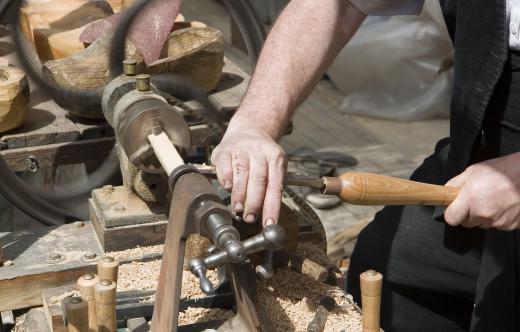Lathes are used to symmetrically remove material from a work piece; the piece spins, and the lathe takes off material evenly on a plane perpendicular to the spinning. A speed lathe is a type of lathe that is designed to operate much faster than its common counterpart. These machines are generally only used for small tasks such as finishing an object or removing burs left over from earlier manufacturing steps. The speed increase is usually achieved through changes to the speed lathe’s motor; these changes allow the lathe to reach appropriate speeds faster than common lathes.
There are many different types of lathes. In order to be a lathe, a device only needs to do one thing: affect a workspace in a symmetrical way. While nearly every lathe does this by spinning the work piece, that is technically not required. This symmetry means that the shape of the piece looks the same from any direction when held with the same orientation. For instance, a candlestick generally looks the same from any viewing angle when placed on a surface.

A common machining lathe holds on to a work piece at two points. It then uses powerful motors to spin the piece at very high speed. A series of tools then touch the piece and remove material at a right angle to the axis of the spin. When it is done, the work area has a distinct shape that is the same from all sides.
These lathes are often very large and bulky. It isn’t uncommon for a standard machining lathe to be as large and heavy as a small car. This bulk allows them to accommodate work pieces of larger sizes and house the motors that spin the material. When a work piece only needs a small amount of work, these lathes are prohibitively expensive to use.
When a smaller tool is needed, manufacturers use finishing lathes. These lathes generally sit on a work table or stand and are about the size of a household microwave. They have much smaller motors and cannot perform many of the tasks that the larger lathes can, but they are much less expensive to operate.
A speed lathe is a type of finishing lathe. When an operator uses a finishing lathe, the majority of the work time is spent waiting for the lathe to speed up or slow down. A speed lathe gets to speed much faster than the common versions and often has a more robust breaking system. This allows workers to operate on more pieces per work cycle, increasing productivity and output. The changes in the speed lathe’s operations generally mean it has slightly less power than a lathe of the same basic shape and cost.
